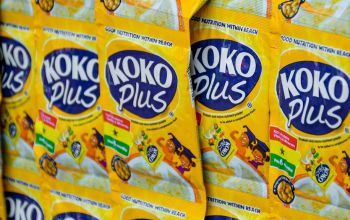Availability, acceptability, and utilization of micronutrient fortification for children 6-23 months in three districts in Ghana
Abstract
Background
Micronutrient deficiencies result from multiple factors, including inadequate intake of micronutrients (vitamins and minerals) from nutrient-rich diverse diets. Point-of-use fortification with a nutritional supplement powder is recommended to address micronutrient deficiencies and anemia among infants and young children (6-23 months), particularly, in low-income countries. In Ghana, about a quarter of children aged 6-59 months are anemic, or deficient in iron and vitamin A. World Vision Ghana (WVG) implemented the integrated Improved Feeding Practices (IFP) project between 2020 and 2023 in three districts in Ghana to improve diet quality and practices of women of reproductive age, and young children below age two years. One component of the project involved the distribution of a nutritional supplement powder (KOKO Plus). This is the second in a series of four papers that document the implementation and outcomes of the IFP project; the other papers are published in this journal. The current paper assessed the availability, acceptability, and utilization of KOKO Plus to households who participated in the IFP project as well as lessons learned from implementing the intervention.
Methods
A mixed-methods design was used, triangulating primary and secondary data. Secondary data originated from review of IFP project documents, including project mid-year and annual reports, and implementation plans across the three interdependent components of the IFP project. Primary data were obtained from interviews in six purposively selected communities. Key informants included WVG staff, community volunteers, and local government agency staff from health and agriculture sector agencies, and beneficiaries of the intervention. Interview respondents answered questions on the project’s mechanism for KOKO Plus distribution, participant experiences of purchasing and using KOKO Plus, perceived benefits of using KOKO Plus, and lessons learned about KOKO Plus from the IFP project. Beneficiaries also provided information on their perceptions of KOKO Plus acceptability and adverse outcomes.
Results
The project distributed KOKO Plus free of charge to almost 14,000 (13,942) children, more than its target (4,900). In addition, Village-Based Entrepreneurs (VBE) sold 192,092 sachets of KOKO Plus in the project communities. The KOKO Plus value chain involved WVG purchasing the KOKO Plus from the Ghanaian manufacturer and supplying it to VBE’s either in their respective communities, or at distribution centers in their respective WVG district office. KOKO Plus promotion and marketing was led by trained VBE’s, VBE supervisors, and Community Based Organizations across multiple settings (homes, child welfare clinics, markets, community durbars, and religious gatherings). There was high acceptability of KOKO Plus. Mothers attributed their acceptance of KOKO Plus to its potential health and nutrition benefits for children. They also attributed increased child weight, and less frequent illness, to feeding meals that included KOKO Plus to their young children. KOKO Plus was added to the diverse local meals fed to young children. Diarrhea was the only mentioned adverse report, albeit rarely. At the end of the IFP project, WVG established a fund to ensure sustainable distribution of KOKO Plus in the project communities.
Conclusions
The IFP project established a KOKO Plus value chain, increasing availability, accessibility, acceptability, and utilization of KOKO Plus in the project communities. VBE’s successfully distributed KOKO Plus with support from community volunteers, and health care workers. This approach to KOKO Plus distribution is feasible and sustainable and is recommended for similar contexts.

Authors retain all copyrights. In making a submission to World Nutrition, they are certifying that all material is theirs except quotations, as indicated, and that they have obtained permission for any photos, tables, or graphics taken from other publications or websites.




